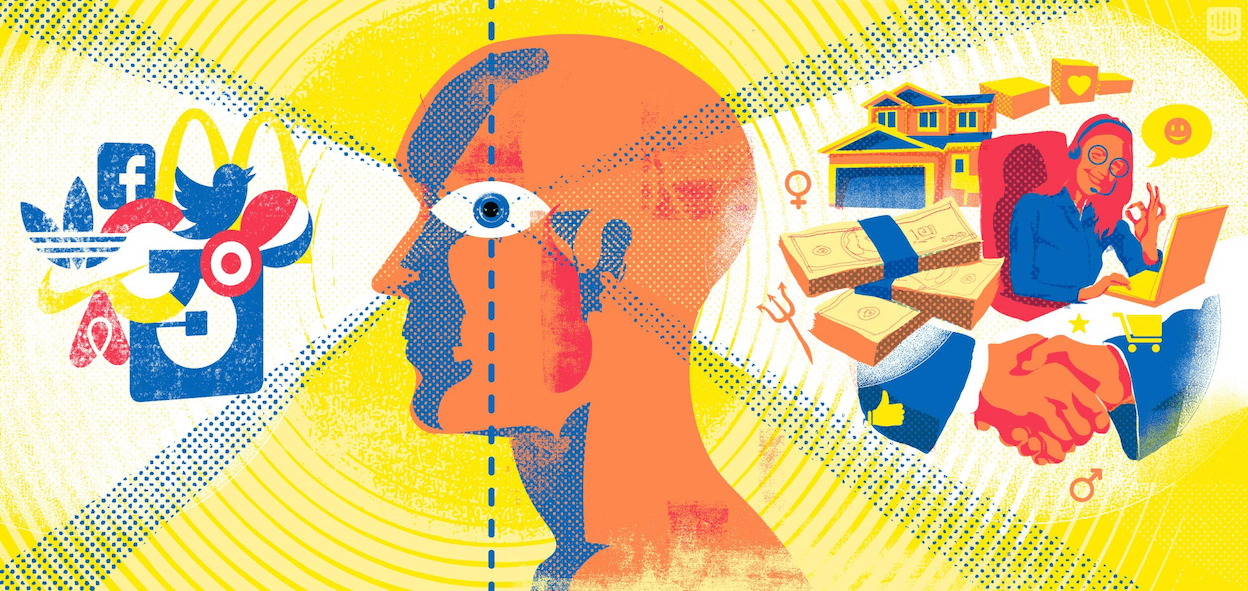
Your brand is an experience not a logo
Main illustration: Jamie Lawson
Too often a new logo is seen as the antidote to real company issues, like churn or stagnation.
Logos are important, but in our hyperconnected world the influence of a logo over consumer behavior is shallow, at best. So why do we still come across so many “new and improved logo” blog posts?
Consider all the ones you’ve seen recently – did any of these actually change your perception of the company?

Uber’s “atom and bit” logo is supposed to reflect Uber’s international expansion and a vision for transporting “people, food, goods, and potentially much more.” Is that how you think of Uber? Is that what keeps you from choosing Lyft?

Google’s colorful favicon is supposed to represent the numerous devices and ways people connect with Google. Is that what Google means to you?

Airbnb’s logo is supposed to encompass the values of belonging. Is that the first word that comes to mind when you think “Airbnb”?
Without a doubt, logos are important. They can be printed on virtually anything and are often the most recognized element of your company. They’re an opportunity for the CEO to wax poetic about company values and mission statement on your blog. However, all their qualities can unravel at the drop of a CEO’s sexist tweet, which goes viral, or confusing docs, which leave customers stuck in a dead-end. Conversely, a great support experience can often excuse a weak, poorly-executed logo.
In “The Brand Gap”, Marty Neumeier writes that a brand “isn’t what you say it is – it’s what they say it is.” In other words, your brand is only as good as an individual’s perception of it. This wholly depends on a person’s unique combination of experiences with your company.
A person’s experience might look like this:

Sometimes it’s this:

For Intercom it might even be our app inside a customer’s app:

But hopefully it’s not this!

The point is, your brand is never what you say it is – it’s what everyone else says it is. And what they say varies widely because it wholly depends on their unique combination of experiences, or touchpoints, with your company. Rarely, does this brand definition include a logo.
A strong brand gets you through both good and bad times. To create one, you need to think past your logo and visual identity and reframe your brand as every place a person can interact with your company.
I’ll use Intercom as an example. We always strive to reflect our mission of making internet business personal in our voice and tone, our product, and how we conduct ourselves. For instance, we reflect this in our product roadmap, where sometimes we build features no one asks for if we firmly believe they will help our customers communicate in a more personal way.
Our Support and Sales teams defer to a pragmatic, helpful voice when they talk to people, and we try to make our support/sales products as frictionless as possible. We try to maintain that personal approach as we operate at scale; whether that’s considering the frequency of marketing emails and demos, or our choice of unique venues for our first Inside Intercom tour. Or the syntax we use in our products. Or the intimate way we announce fundraising.
As the internet gets noisier and filled with companies jostling for your attention and money, it’s the authentic, personal brands that form real consumer loyalty. If you’re successful, other companies will probably copy your homepage design, steal your code, rip off your product interface, steal your logo, and much worse, but they can never copy your mission, your values, your drive, and everything that trickles down from that.






